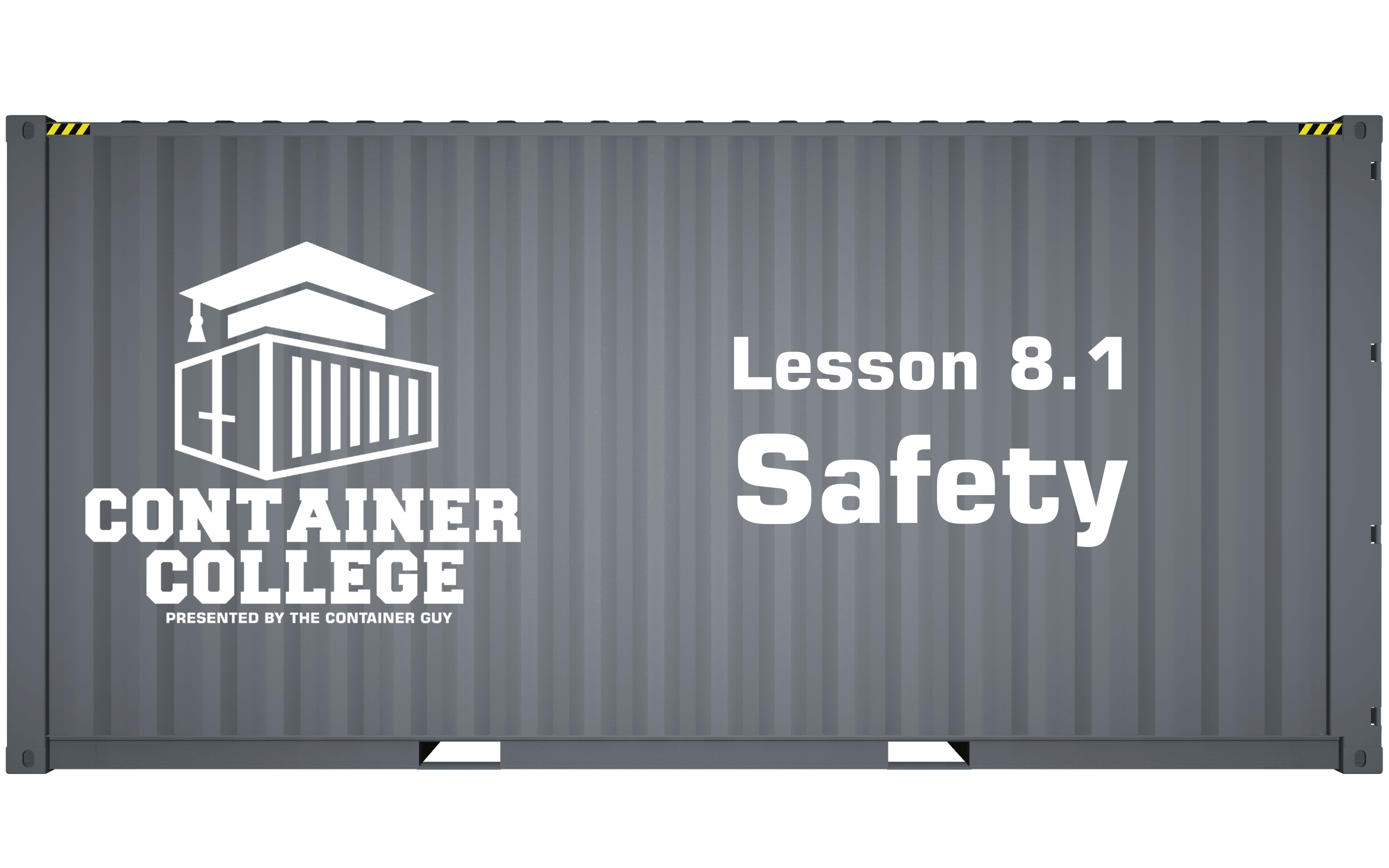
Stacking shipping containers is a great way to save space, increase functionality, or even create multi-story container buildings. But it’s not as simple as placing one box on top of another. Improper stacking can lead to serious structural issues, safety risks, or even collapse, especially when modifying or using containers for public or commercial access.
At The Container Guy, safety is our top priority. In this guide, we’ll walk you through how to safely stack shipping containers, what to watch for, and which Container Modification World (CMW) products make the job safer and easier.
Why Stack Containers?
Stacking is useful for:
- Saving yard space
- Creating observation towers or storage mezzanines
- Building multi-level container homes or offices
- Separating spaces (workshop below, storage above)
But any time you're stacking steel structures—especially ones that are being modified—it’s critical to plan for load paths, wind resistance, and structural integrity.
Risks of Improper Container Stacking
- Tipping or collapse from improper alignment
- Twisting or bowing of lower containers under uneven loads
- Shear stress on doors, windows, or modifications
- Shifting in high winds or when lifted again
- Crushed roof panels if the load isn't placed over the corner posts
Important: Containers are only structurally rated to be stacked at the corners, not in the center of the roof or side walls.
How to Safely Stack Shipping Containers
Step 1: Start with a Level Foundation
- Use concrete pads, screw piles, or blocking under all four corners
- Make sure the base container is fully supported and level
Uneven stacking is the most common cause of future settling, door misalignment, and stress fractures.
Step 2: Align Corner Castings Perfectly
Containers should be stacked corner to corner so the vertical load transfers directly through the steel corner posts—not the roof panels or side walls.
CMW Product: ISO Stacking Pins & Twist Locks
- Lock containers together safely at all four corners
- Prevent shifting, sliding, or separation in high winds
- Required for multi-story container builds
- Easy to install between the upper and lower castings
Step 3: Secure Against Lateral Movement
Stacked containers are vulnerable to shifting side-to-side due to wind or vibration. Use locking hardware to prevent this, especially if the stack is more than two high or exposed to strong winds.
For permanent installs, also consider bolting the bottom container to screw piles or using CMW’s bolt-down bracket system for extra stability.
Step 4: Avoid Unsupported Openings
If your lower container has had its sidewall or roof cut out for doors, windows, or roll-up access, make sure it’s reinforced before stacking anything on top.
CMW Product: Structural Framing Kits
- Support large wall openings or door cutouts
- Reinforce the container to handle vertical loads from stacking
- Made to match container profiles and install with bolts or self-tappers
Step 5: Add Safety Railings for Access Areas
If you’re using the top container for storage or public access, you need railing systems, stairs, or ladders that meet code.
Tip: We don't currently sell railings or stair kits, but our team can help you design your container layout so it’s ready for compliant access solutions.
Special Notes for Multi-Story Container Structures
- Work with an engineer when stacking more than two high
- Don’t stack high cube containers under standard height ones (the height mismatch can leave gaps in corner castings)
- Ensure full structural bracing if modifying load-bearing walls
- Always use approved stacking hardware—no makeshift brackets or shims
Stacking Safety Recap
- Level your foundation
- Stack corner to corner
- Lock containers together with twist locks or stacking pins
- Reinforce any modified walls before stacking
- Secure the bottom container to the ground when needed
- Avoid unsafe access to top containers without a railing



